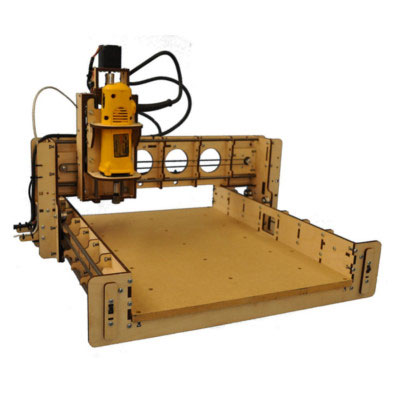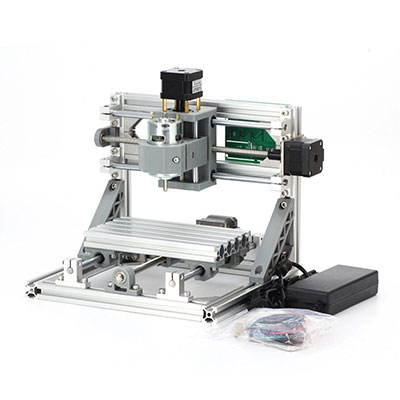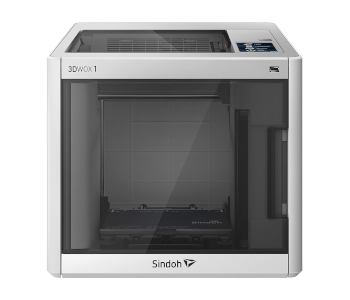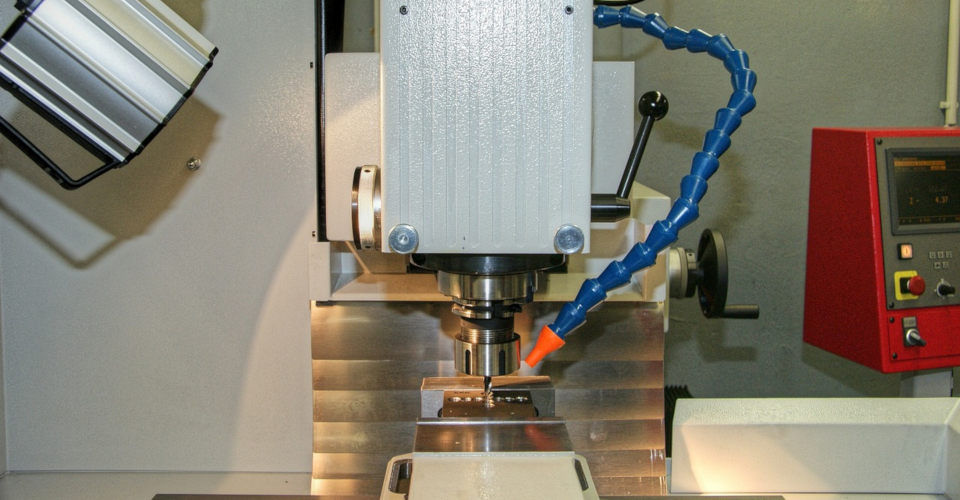What is CNC Machining and How Does It Work?
Machining is the process by which raw materials (wood, metal, or plastic among others) are shaped or cut into more useful forms. Manual machining techniques may have been a steadfast element of the Industrial Revolution, but they are now being set aside in favor of computer-aided machining.
Nowadays, CNC machining is considered a cornerstone of modern manufacturing. It’s more reliable, precise, and does not rely on error-prone manual work. How exactly does CNC machining work and how is it used? What are its benefits and corresponding drawbacks?
What is CNC machining?
CNC stands for computer numerical control, a process by which computer-based programs are used to control the movement and operations of a machine. It is important to make the distinction between CNC and simple numerical control, the latter being the predecessor of the former. The early methods of numerical control, developed in the 1940s, used punched tape to input commands into the manufacturing machines.
Before CNC, manufacturing machines had to be controlled using hand wheels or levers or have to follow pre-fabricated tool guides. CNC has proven to be a huge upgrade to the old-fashioned manual machining methods. CNC-aided manufacturing is more versatile and more reliable for high-volume production.
As CNC is merely a control scheme, it can be used with a wide array of machining equipment. Traditionally, CNC machines were almost exclusively used for subtractive manufacturing, such as the cutting down of metal blocks or wood planks. However, modern 3D printers are now considered an additive manufacturing method that are also examples of CNC machining.
An overview of the CNC machining process

Although there is a huge variety of CNC machines, the design and manufacturing process share striking similarities. Every CNC process starts with a design – more specifically, a 3D or 2D design typically made in a CAD software platform. This acts as the basis for the CNC commands and provides the end-user a visual representation of what the final product will look like. A CAD design also takes into account the measurements and geometry of the starting material and the finished product.
The CAD design is then processed by computer-aided manufacturing (CAM) software, which extracts the geometry of the model and converts it to digital programming code. Different CNC machines use different programming codes, but most of them use a combination of G-code and M-code.
G-code stands for geometric code, which covers commands for the movement of the machine tools. G-code commands comprise the bulk of the programming code of a CNC machine, controlling functions such as where the tools will go, what path they will take, and how fast they will travel. In contrast, M-code (miscellaneous function code) only controls the auxiliary functions of the machine such as turning on and off and removal of the machine’s cover.
Once the CAM has generated a CNC program, it can be loaded to the CNC machine for execution. Before executing the program, the operator of the CNC machine will need to assure that the proper tools have been installed into the spindles and that the workpiece has been secured to the build platform. This is the step of the process that requires the highest degree of human intervention.
CNC machines should generally have an integrated computer where you can load, review, and execute the program commands. Once the program runs, it will take control of the operation and manipulation of the machine tools. This proceeds until the project has been completed, after which the operator can simply secure another workpiece to the build platform if another iteration is needed.
A distinction also needs to be made between closed-loop and open-loop CNC systems. In an open-loop system, communication only occurs in a single direction – from the controller to the motors. Closed-loop systems are a little more sophisticated in that it allows for the controllers to receive feedback signals from the motor, allowing them to adjust to rectify any irregularities.
Pros and cons of CNC machining
Given how CNC machining has become the standard of modern manufacturing, it’s clear that its benefits outweigh the drawbacks. However, it’s not a perfect platform and some aspects of manufacturing had to be sacrificed to make way for its adoption.
PROS:
• Almost fully automated
There are a lot of benefits to the fact that CNC machining is a process that is almost fully automated. The most obvious is the fact that it’s faster. Movement of tools by servomotors is much faster than having to move them by crankshafts and wheels. The changeover from one workpiece to the other is also faster since the operator only needs to replace the piece on the build platform.
This also takes into account the fact almost all of the production is performed by a machine. The CNC machine can operate 24 hours a day for consecutive days without having to stop for significant periods or slow down. This means that human fatigue becomes an almost negligible factor in determining production speeds.
• Precise and repeatable
Another huge benefit of an automated and programmed process is that it can be repeated several thousand times while maintaining a reasonable level of quality. In the old methods, this can only be done using pattern guides which can also break down after a while. The repeatability of CNC machining makes it an excellent technology for high-volume production needs, as well as for high-performance parts.
• Easy to learn
Working with machines used to be a complex craft that required a significant amount of experience or formal training. After all, these machines have high-speed tools that can cut through wood or metal – not only are they hard to control, but they can also be very dangerous for those who lack proficiency.
In stark contrast, learning how to operate a CNC machine takes very little training. Aside from knowing how to make tool changes and secure workpieces to the build platform, a CNC machine operator does not need to do much more than run the program. Since the operator does not directly influence the quality of the output, even highly detailed designs can be reproduced, regardless of the operator’s skill level.
• Less manpower needed
Since CNC machines require very little operator intervention, it also allows a single operator to operate several CNC machines simultaneously. The reduction in manpower somewhat offsets the cost of investing in CNC machines and allows companies to accommodate more challenging customer demands.
CONS:
• Expensive
A company shifting to CNC machines will have to make a sizable investment. Aside from retrofitting their existing machines, they will have to purchase the software needed for CAD designs and to convert said designs to a CNC code. If they have no expertise in 3D design and programming, they may either train their staff or outsource this part of the process to a third-party service provider.
In any case, making an upgrade to CNC systems is an investment that should pay for itself in terms of volume, quality, consistency, and a reduction in manpower and training requirements. For smaller businesses, this payoff may not be realized as quickly.
• Loss of skills
The ability to manipulate cutting and milling tools is a time-honored craft because of how valuable and difficult it is. With CNC machines, this skill no longer becomes relevant. With time, fewer and fewer people will come to develop this set of skills until the expertise almost completely disappears.
Considering all the benefits and limitations, it’s quite apparent how CNC machining has become the new standard for high-volume manufacturing. However, it may not be as practical for small-scale businesses. This leaves room for more traditional manufacturing skills to continue to prosper and be developed.
Examples of CNC machines
A distinct characteristic of CNC technology is that it can be applied to just about any manufacturing method. Here are just some of the more common CNC machines:
CNC mills

Milling is an operation where a cutting tool rotates, etching patterns or holes into the workpiece. They are especially suitable for CNC integration as the tool only needs to move along the X, Y, and Z axes. CNC mills are highly versatile as they are capable of both face milling – making shallow cuts or grooves on flat surfaces – and peripheral milling, which requires cutting of deeper cavities.
CNC lathes
Lathe machines are a subset of cutting machines that are limited to cutting workpieces that rotate in a single axis. The material for the workpiece is secured at both ends and rotated while a cutting tool is pressed against it at set locations. With a CNC lathe, the position of the cutting tool, its movement along the axis, and the speed of rotation of the workpiece can all be pre-programmed.
Lathes are used to create items that are symmetrical to an axis of rotation. These include table legs, banisters for stairs, pen shafts, candle holders, chess pieces, and crankshafts. The most common materials used in lathes are metal and wood, but there are also specialty cutting tools for plastic or glass.
Plasma cutters
Instead of mechanical cutting tools, a plasma cutter uses a stream of hot plasma to cut through stainless steel, steel, brass, aluminum, or other conductive metals. Plasma is created when high-pressure compressed air is introduced to an electric arc, converting some components of the gas into plasma. This technique results in clean and sharp cuts delivered at a rate faster than when mechanical cutting tools are used.
The high throughput of plasma cutters and the fine level of detail they can achieve makes them very suitable for CNC technology. CNC plasma cutters typically only have the gas nozzle moving in two dimensions, creating cuts with flat profiles. However, there are also three-dimension plasma cutters that allow for angled cuts.
Water jet cutters
When the material is being processed is sensitive to extremely high temperatures, a waterjet is the preferred cutting method. Waterjet cutters use a high-pressure stream of water mixed with an abrasive substance, like sand, to cut through metal, glass, stone, or paper. This results in cuts that are not affected by warping or any alteration of its intrinsic properties.
CNC waterjet cutters allow for automated control of both the movement of the water nozzle and the pressure at which the water is ejected. Waterjet cutting is a highly precise technology, although the process can be quite slow, and the equipment has a very large footprint.
Laser engravers
Laser engravers cut through and create patterns on the surface of a material by subjecting it to a narrow beam of a high-energy CO2 laser. A laser is one of the most versatile manufacturing tools because its intensity can be varied to handle engraving, marking, or cutting jobs for a variety of materials. Since lasers are so small, they can recreate highly intricate details – even photorealistic designs.
CNC is pretty much a given for laser engravers, given that it’s a rapid and high-precision process. One other thing that’s unique with CNC laser cutters and engravers is that they are non-contact techniques. The workpiece does not even need to be clamped down to the build platform. This allows for gentler handling of the workpiece.
3D printing

Just about all types of 3D printers can also be considered CNC machines. This is one of the rare examples of CNC technology being used for additive manufacturing. In 3D printing that uses Fused Deposition Modeling technology, plastic filament is melted and extruded through a nozzle that moves along a build platform, laying down the molten filament layer by layer based on a 3D model.
In terms of instrumentation, 3D printers are a bit more complex compared to CNC mills, lathes, or laser engravers. Not only does the movement of the nozzle and the rate of filament extrusion be controlled, but the temperature of the nozzle’s heating element must also be regulated. Depending on the requirements, a 3D printer may also need to have a heated build platform and a cooling fan.
Still, it’s a testament to the effectiveness of CNC technology that such feats of coordination can be done by a single person with minimal training.
Final thoughts
CNC machines represent the evolution of manufacturing technology. Making the jump from manual control to computer-aided control has allowed the possibility of creating highly intricate cuts, holes, and engravings with excellent precision. Since everything is automated, CNC machines can recreate the same job thousands of times without the problems associated with human error.
As good as CNC technology seems, it is still no foolproof. A machine may not get tired, but it still relies on mechanical parts that could fail after repeated use. A machine is also not trained to detect irregularities outside the scope of its program. This can lead to dangerous situations that can only be addressed by human intervention.

